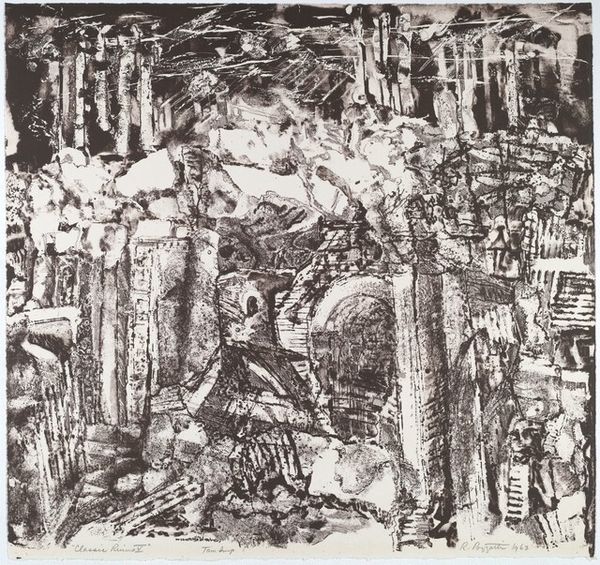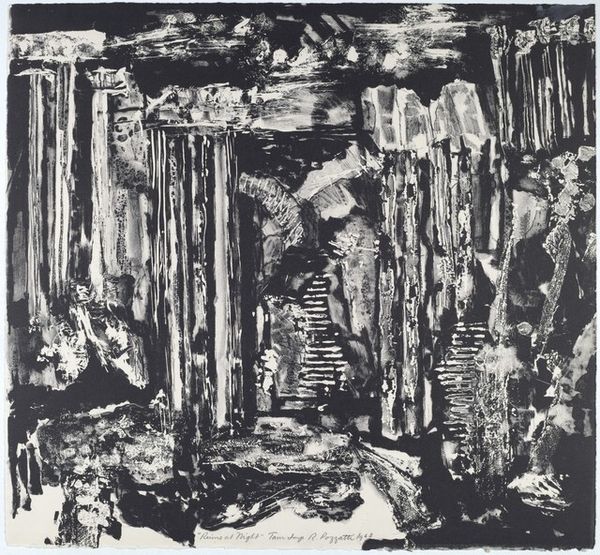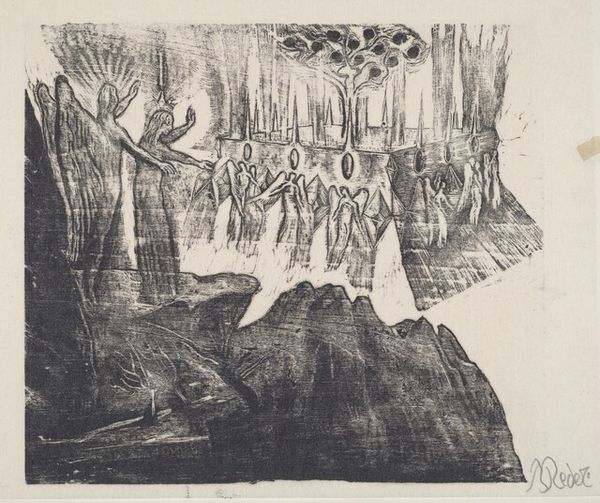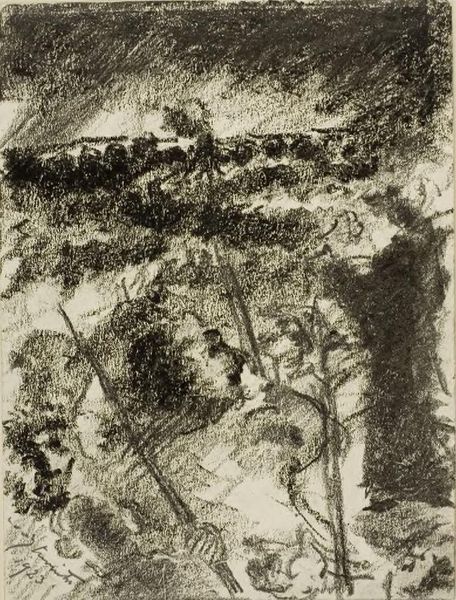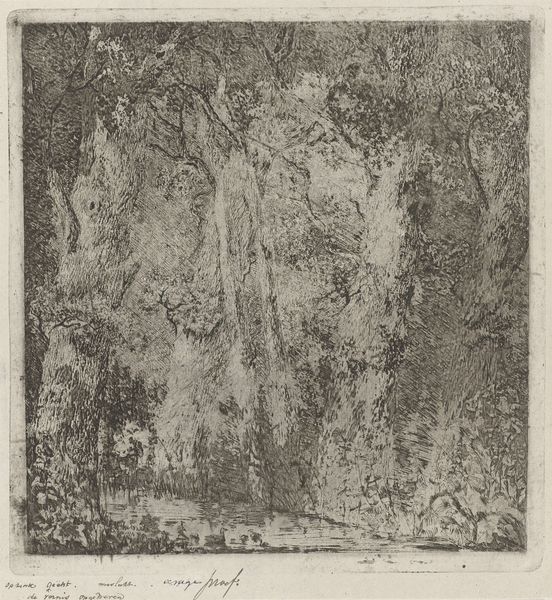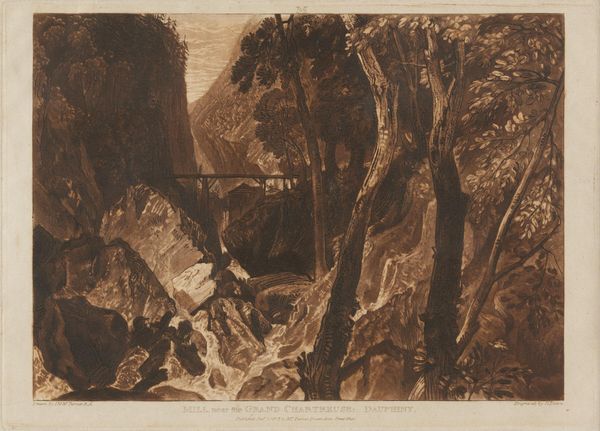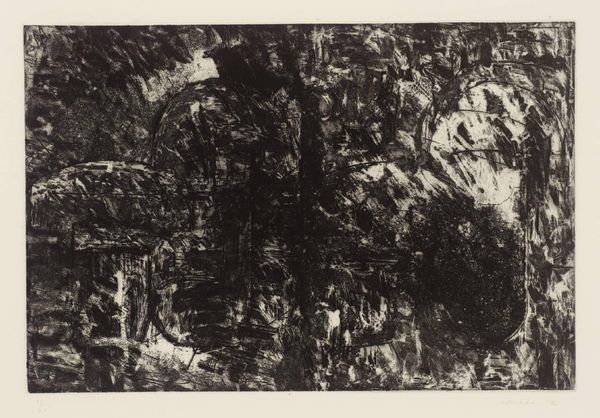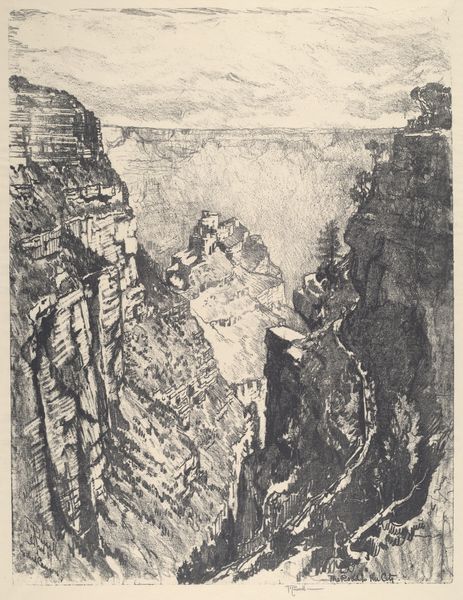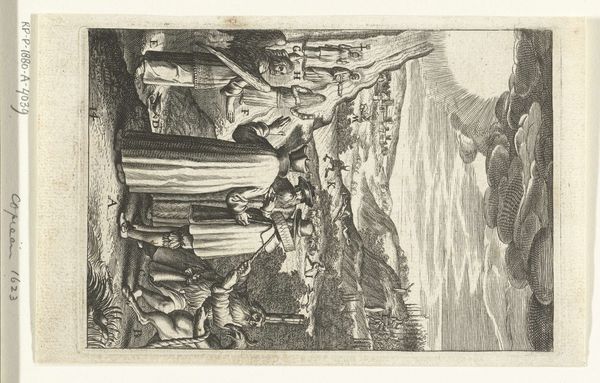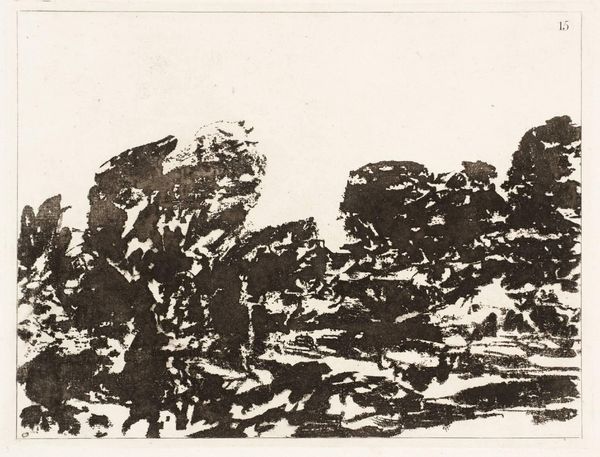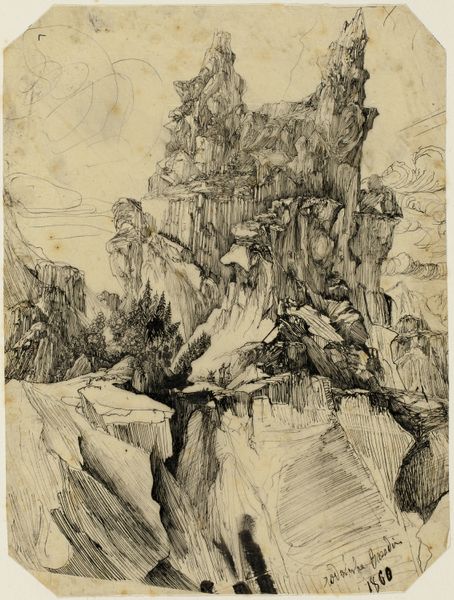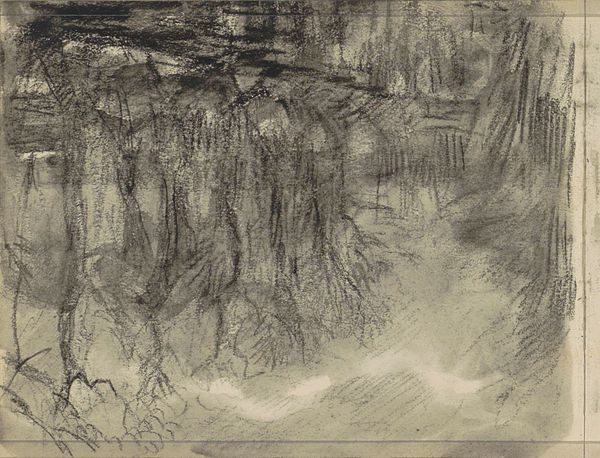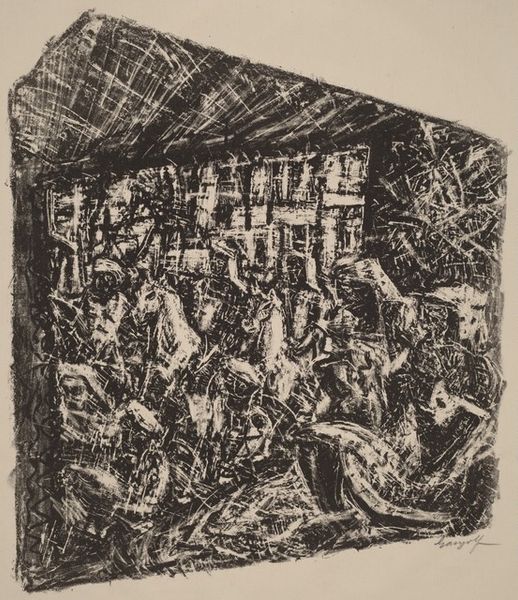
graphic-art, print, etching
#
graphic-art
# print
#
etching
#
etching
#
abstraction
#
monochrome
Copyright: National Gallery of Art: CC0 1.0
Editor: This is Rudy Pozzatti’s “Classic Ruins IV,” an etching from 1963. I’m immediately drawn to the density of the image; it almost feels claustrophobic. It’s hard to pick out individual forms, and I wonder about that. What do you see in this piece? Curator: What I find particularly interesting is the tension between the title, “Classic Ruins,” and the almost chaotic abstraction we see before us. It speaks volumes about the societal shifts happening in the '60s. The title suggests a link to history, to grand narratives, while the execution reflects a breakdown of those established structures. What "ruins" do you think Pozzatti is exploring? Editor: Maybe it's not just physical ruins, but the ruins of old ways of thinking? A crumbling of traditional hierarchies? Curator: Exactly! Etchings, prints were becoming more accessible. How might Pozzatti's choice of medium speak to his interest in broadening who gets to engage with art and, therefore, these historical and social questions? Editor: I guess making a print means it could be reproduced and distributed more widely. So it's not just about depicting the crumbling of something, but democratizing access to that idea? Curator: Precisely. It becomes a political act. And in this period, abstraction was often seen as challenging the status quo. Consider how museums were then showcasing abstract art – what statements were these institutions trying to make about themselves and about American culture at large? Editor: It’s amazing to consider how even an abstract piece like this is embedded within specific cultural and political conversations. Curator: Absolutely. Art doesn't exist in a vacuum. And remembering this allows for deeper engagement with works of art that we might overlook, or think of as obscure. Editor: I’ll definitely carry that idea with me. Thanks!
Comments
No comments
Be the first to comment and join the conversation on the ultimate creative platform.
